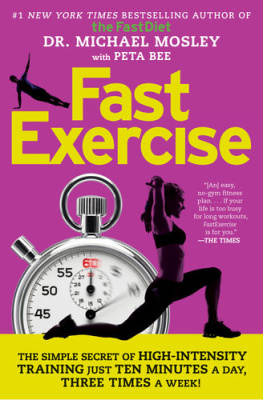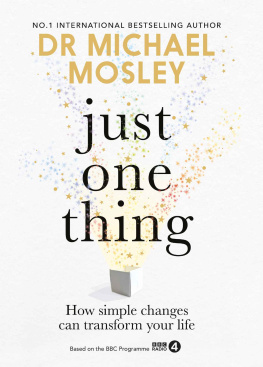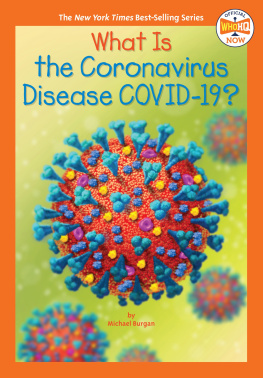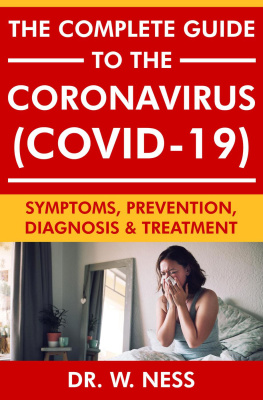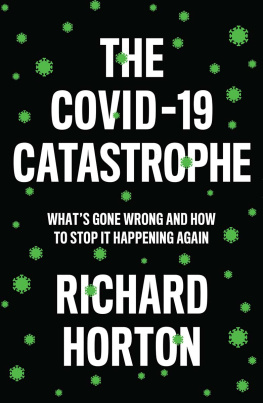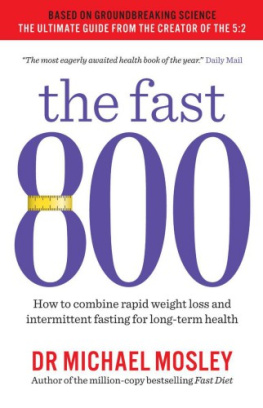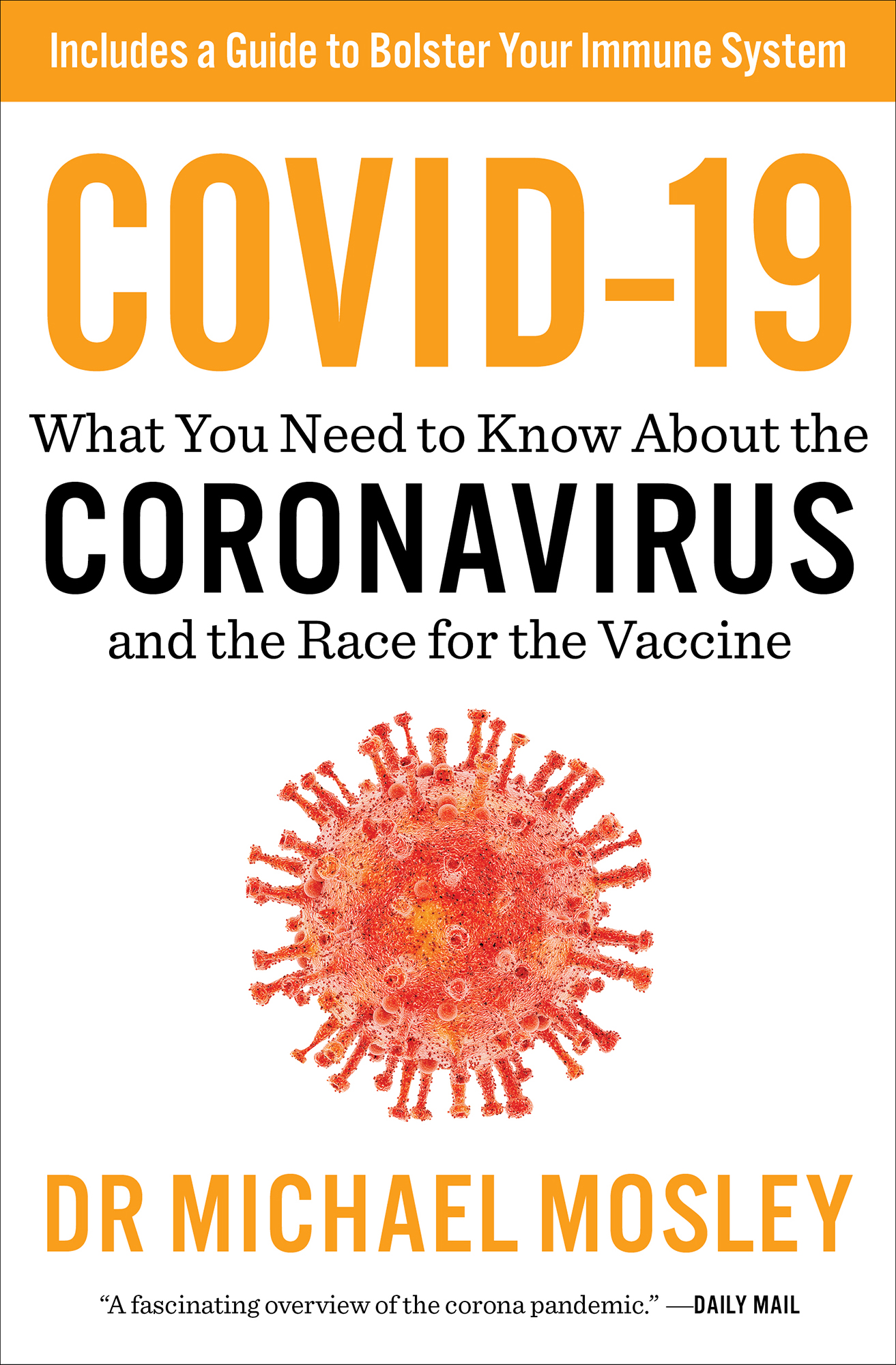Contents
Guide
INTRODUCTION
F ew of us have lived through anything like this or had to face such an uncertain future. As I watched fireworks explode on New Years Eve, I was completely unaware that earlier that day the Chinese had announced the outbreak of a novel virus in the city of Wuhan. Nor would I have been particularly concerned.
As a science journalist I have, through the years, made a number of documentaries about the dangers of microbes jumping from animals to humans and creating a devastating worldwide pandemic. I have also written articles about how vulnerable we are to the emergence of a sly new pathogen. But in my heart of hearts I never thought it would be as bad as this. I assumed, as so many others did, that when a new, infectious agent appeared we would be able to use the high-tech tools at our disposal to isolate and stamp it out.
Yet the world had plenty of warnings that an unstoppable pandemic was not only possible but highly likely. In the 40 years since I went to medical school there have been numerous outbreaks of novel infectious diseases caused by viruses going from animals to humans, ranging from AIDS to bird flu, swine flu, SARS, MERS, and Ebola. AIDS alone has killed over 30 million people and continues to kill another 700,000 every year.
What should have worried governments is that over recent decades the number of fresh outbreaks has been growing, with new ones emerging at four times the rate that they were back in the 1980s. The World Health Organisation has pointed out again and again that it was only a matter of time before something like this happened.
And now it is here. Among us. A terrifying science fiction story that has suddenly become real. And our best hope, indeed our only hope of bringing this virus under control, now lies with the scientists. We need their computer models, their ability to create effective treatment, and, above all, we need them to create a safe and effective vaccine.
This book is about the race to create that vaccine. It is also a distillation of what we currently know about SARS-CoV-2, how it spreads, and how you can best protect yourself from being struck down. I will answer some of the most common questions that come my way, and end by taking a peek into the future, speculating what it will look like.
I have been fortunate enough to gain access to numerous experts who have been generous with their time. I have relied on their expertise, as well as on the extraordinary amount of excellent news coverage produced by my fellow science journalists from around the world. I have also tried, to the best of my ability, to keep up with the huge number of new studies that have poured out of science journals over the months that I have been writing this book.
No one knows how bad this pandemic will become or how long it will last. I am guardedly optimistic that science will come to our rescue and that we will develop more accurate tests and more effective treatmentsas well as that all-important vaccine. I am also optimistic that this will be the wake-up call we need to combat future, even more lethal microbial threats.
PORTRAIT OF A SERIAL KILLER
T he Chinese military strategist, Sun Tzu, wrote in his classic book The Art of War that victory comes from understanding your enemy. So what have we learned about this novel virus?
We know that SARS-CoV-2or Severe Acute Respiratory Syndrome Coronavirus 2, to give it its full nameis tiny, just 120 nanometers (billionths of a meter) across. You could fit a hundred million viral particles on the head of a pin and yet you would only need to be exposed to a few hundred to get infected. If you do get infected and develop symptoms, then the disease you get is called Covid-19.
SARS-CoV-2 is a killer with a range of impressive superpowers, including the ability to travel among us, undetected, infect almost everyone it meets, and then reproduce liberally, before jumping off in search of a new host. It has found a range of ingenious ways to hide from its most deadly enemy (our immune system) and, thanks to the airplane, can travel from one side of the globe to the other at astonishing speed.
Like other viruses, it is not exactly alive, and it certainly doesnt have a personality, but I like to think of it as a cunning enemy; that is why I will be using the metaphors of war when it comes to the battle that we face.
It is also why, for the purposes of this narrative, I am going to give the virus agency and purpose, which it clearly doesnt have. Viruses dont plan, seek out, or attempt to avoid. They are mindless scraps of genetic material, brilliantly adapted by evolution for one purpose: to reproduce and spread as far and as fast as they can.
And, finally, although its proper name is SARS-CoV-2, from now on, for simplicitys sake, I am going to refer to it as the Covid-19 virus.
The Covid-19 virus represents the greatest public health crisis of the last hundred years. As well see, only by mobilizing the scientific community and by committing huge resources are we likely to be able to keep the death toll down and return to any sort of normality.
Meet the Enemy
Despite the huge threat it poses, the Covid-19 virus is relatively simple. Its core is a single strand of ribonucleic acid (RNA), which stores all the genetic information the virus needs to reproduce. Think of it as a Covid-making instruction manual, just 30,000 letters long.
A human-building instruction manual, by comparison, comes in the form of DNA, which is tightly packed into our cells in 46 manuals, known as chromosomes. Put those 46 manuals together and you get our genome, which consists of 6.4 billion letters. If you took all the DNA from just one of our cells and stretched it out (Ive done it), then it would be around 6 feet long. Take it out of all of your cells and it would be 10 billion miles long. We are large, complicated, and clever. Covid-19 is not. Yet it has us on the run.
This short strand of Covid-19 RNA is protected by a fatty outer membrane, which is quite fragile. It breaks apart when it meets soap and water, which is why hand washing, with soap is so important.
The outer membrane of the virus is studded with club-like spikes that give the virus its name (corona, meaning crowns) and that it uses to get into our cells. These are also a potential area of vulnerability as it is those spikes, as we will see in chapter 5, that most vaccine makers are targeting.
The way the virus spreads is mainly through coughs and sneezes. If someone who is currently infected with the virus coughs or sneezes near you, out will come a cloud of viruses. If you are unlucky enough to inhale just a few hundred particles, then they could get into your throat and will immediately start looking for cells to invade.
The Invasion Begins
The good news is that your body has evolved numerous defenses to protect you against just such a threat. The bad news is that your body has a fatal flaw. On the surface of many of your cells there is an enzyme called ACE2.

